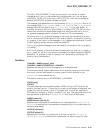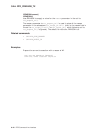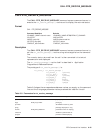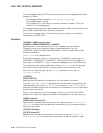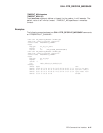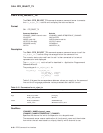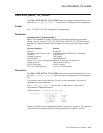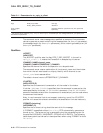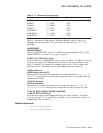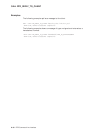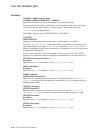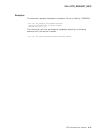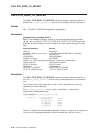
CALL RTR_REPLY_TO_CLIENT
CALL RTR_REPLY_TO_CLIENT
The CALL RTR_REPLY_TO_CLIENT command causes a command server to
execute the
rtr_reply_to_client( )
routine and to display the returned status.
Format
CALL RTR_REPLY_TO_CLIENT [message-field1] [,message-field2...]
Parameters
[message-field1] [,message-field2...]
Specify the message to be sent as one or more comma separated parameter
values. You can use the /TYPE_OF_DATA and /LENGTH_OF_DATA positional
qualifiers on each parameter value to specify the data type and length of each
field.
Command Qualifiers Defaults
/ACCEPT NOACCEPT
/CHANNEL_NAME=channel-name /CHANNEL_NAME=RTR$DEFAULT_CHANNEL
/CLUSTER /NOCLUSTER
/FORMAT=fmt-string /NOFORMAT
/INDEPENDENT NOINDEPENDENT
/LENGTH_OF_FIELD=message lengthDepends on data type; see description.
/NODE[=node-list] /NODE=default-node-list
/OUTPUT[=file-spec] /OUTPUT=stdout
/TYPE_OF_DATA=data type /TYPE_OF_DATA=STRING
Description
The CALL RTR_REPLY_TO_CLIENT command causes a command server to
call the
rtr_reply_to_client( )
routine using values supplied on the command
line.
The numeric status returned from the call is then converted to its textual
representation and displayed.
The
rtr_reply_to_client( )
routine itself is described in Application
Programmer’s Reference Manual.
The prototype of
rtr_reply_to_client( )
is:
rtr_status_t rtr_reply_to_client (
rtr_channel_t channel,
rtr_rep_flag_t flags,
rtr_msgbuf_t pmsg,
rtr_msglen_t msglen,
rtr_msgfmt_t msgfmt
);
Table 6–11 shows the correspondence between values you supply on the command
line and the C language parameter values produced and used for the call.
RTR Command Line Interface 6–31



